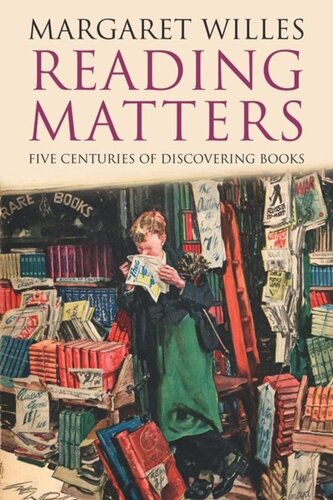

Most ebook files are in PDF format, so you can easily read them using various software such as Foxit Reader or directly on the Google Chrome browser.
Some ebook files are released by publishers in other formats such as .awz, .mobi, .epub, .fb2, etc. You may need to install specific software to read these formats on mobile/PC, such as Calibre.
Please read the tutorial at this link: https://ebookbell.com/faq
We offer FREE conversion to the popular formats you request; however, this may take some time. Therefore, right after payment, please email us, and we will try to provide the service as quickly as possible.
For some exceptional file formats or broken links (if any), please refrain from opening any disputes. Instead, email us first, and we will try to assist within a maximum of 6 hours.
EbookBell Team

5.0
88 reviewsIt is easy to forget in our own day of cheap paperbacks and mega-bookstores that, until very recently, books were luxury items. Those who could not afford to buy had to borrow, share, obtain secondhand, inherit, or listen to others reading. This book examines how people acquired and read books from the sixteenth century to the present, focusing on the personal relationships between readers and the volumes they owned. Margaret Willes considers a selection of private and public libraries across the period—most of which have survived—showing the diversity of book owners and borrowers, from country-house aristocrats to modest farmers, from Regency ladies of leisure to working men and women.
Exploring the collections of avid readers such as Samuel Pepys, Thomas Jefferson, Sir John Soane, Thomas Bewick, and Denis and Edna Healey, Margaret Willes also investigates the means by which books were sold, lending fascinating insights into the ways booksellers and publishers marketed their wares. For those who are interested in books and reading, and especially those who treasure books, this book and its bounty of illustrations will inform, entertain, and inspire.